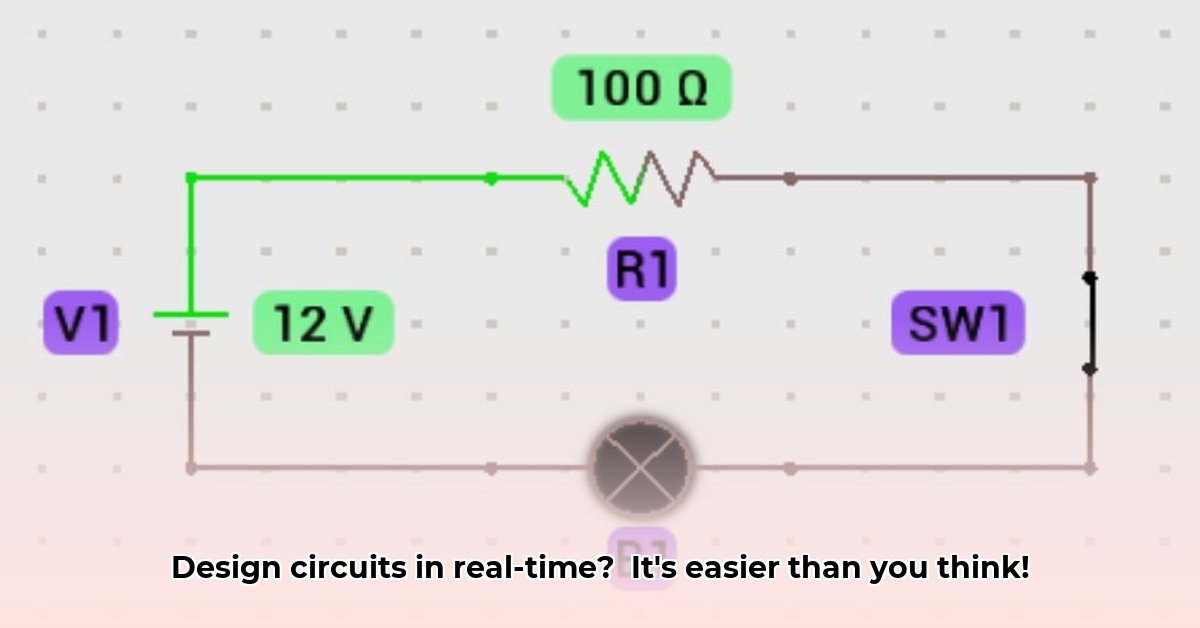
PROTO simulator is a mobile application aiming to democratize circuit design, making it accessible to hobbyists, students, and professionals alike. This review examines its capabilities, limitations, and overall effectiveness, comparing it to established desktop simulators. We'll explore its strengths and weaknesses, offering a balanced perspective to help you decide if PROTO is the right tool for your needs. Is PROTO the perfect solution for all your circuit simulation needs? Let's find out.
Exploring PROTO's Capabilities: A Comprehensive Overview
PROTO offers a surprisingly comprehensive library of electronic components. Standard components like resistors, capacitors, and transistors are readily available, complemented by a unique selection of sensors and the ability to integrate JavaScript code into designs. This flexibility is uncommon in mobile simulators, opening up possibilities for innovative and interactive circuits. However, the accuracy of these simulations remains a key area of investigation. How robust are the underlying algorithms?
Real-Time Simulation: A Powerful Visual Aid
PROTO's real-time simulation is a standout feature. Watching circuit behavior unfold dynamically, visualizing voltage fluctuations and current flow, is incredibly insightful for debugging and understanding circuit function. The integrated four-channel oscilloscope further enhances this capability, providing a powerful analytical tool directly within the app. This visual feedback significantly benefits both beginners and experienced designers, accelerating the design and debugging process. But how does this real-time capability affect the overall accuracy of the simulations?
User-Friendliness: Intuitive Design for All Skill Levels
PROTO's interface is remarkably intuitive and easy to navigate, regardless of the user's experience level with circuit design. Helpful tutorials and readily available documentation enhance the learning experience, making it ideal for educational settings and self-guided learning. Sharing and exporting designs in multiple formats facilitate collaboration and streamlined workflows. This ease of use is a major strength, but can it handle the complexity required by professional engineers?
Limitations: Accuracy and Advanced Feature Considerations
Despite its user-friendly design, PROTO has limitations. Precise details regarding simulation accuracy are currently limited. Direct comparisons against industry-standard simulators like Multisim or LTspice are needed to truly assess its performance on complex circuits. The JavaScript integration, while innovative, might introduce performance bottlenecks in complex designs, requiring further testing and optimization.
Sensor Integration: Innovative, Yet Uncertain
The integration of phone sensors (light, accelerometer, etc.) as circuit components is a unique and intriguing feature. It enables the creation of interactive circuits that respond to the environment. However, validation of the accuracy and consistency of sensor readings across different devices and over time is crucial. The reliability and reproducibility of results using sensors warrant further scrutiny.
Who Should Use PROTO? A User Profile Matrix
PROTO's suitability depends greatly on the user's needs and expertise:
| User Type | Ideal Uses | Potential Challenges |
|---|---|---|
| Hobbyists/Students | Learning circuit basics, experimentation | Limited accuracy for complex designs, fewer advanced features |
| Educators | Engaging teaching aids, classroom demonstrations | Requires supplementary materials, accuracy needs clarification |
| Professional Engineers | Rapid prototyping, initial design exploration | May not replace dedicated desktop software for final designs |
Addressing Potential Improvements: A Path Forward for PROTO
To enhance its capabilities and address its limitations, PROTO's development should prioritize:
- Rigorous Sensor Accuracy Testing: Compare sensor readings against dedicated hardware to establish accuracy benchmarks and limitations.
- JavaScript Performance Optimization: Thoroughly test and optimize the JavaScript interpreter to address any performance bottlenecks.
- Benchmarking Against Industry Standards: Publicly release comparative data against established simulators (e.g., Multisim, LTspice) using standardized benchmark circuits.
- Enhanced Platform Compatibility & Optimization: Optimize for a broader range of mobile devices and provide clear compatibility information.
Regulatory Compliance: A Critical Consideration
Remember, using PROTO for real-world designs requires strict adherence to all relevant safety standards and regulations. Verify designs against applicable legal and safety guidelines before implementation. This precaution is paramount for responsible and safe application of PROTO's capabilities.
The Future of PROTO: Significant Potential
PROTO shows considerable promise, particularly as an educational tool and for rapid prototyping. Its user-friendly design combined with real-time simulation makes it powerful for learning and initial design exploration. However, improvements in simulation accuracy and feature expansion are needed to compete with established desktop simulators. Its future development holds significant potential.
How Accurate is PROTO Circuit Simulator for Complex Circuit Simulations? A Deeper Dive
Key Takeaways:
- PROTO's accuracy is highly dependent on circuit complexity: simpler circuits yield more accurate results.
- Real-time simulation, while advantageous, involves trade-offs in detail compared to slower, more precise simulators.
- PROTO's user-friendliness and efficiency make it valuable for rapid prototyping and education.
- For critical applications, always verify simulation results using physical prototyping.
PROTO's real-time simulation is its key strength, enhancing rapid prototyping and iterative design. However, this speed necessitates some modeling simplifications. For extremely complex circuits, the level of detail may be less than what is achievable with other, more computationally intensive simulators. Always validate your results against physical prototypes, especially for safety-critical applications.
Comparing PROTO to Other Simulators: Finding the Right Fit
To fully understand PROTO's niche, compare it to other simulators. LTSpice offers accuracy but lacks the real-time feedback. Commercial options like Altium provide unparalleled accuracy and detail but come with a higher cost and steeper learning curve. Choosing the right simulator depends on the specific needs and resources available. PROTO is a valuable addition, but not always a complete replacement for other options. The choice is driven by specific project characteristics.
Conclusion: A Powerful Tool, With Limitations
PROTO offers a user-friendly and efficient approach to circuit simulation, particularly valuable for educational purposes and rapid prototyping. Its real-time capabilities are a game-changer. However, understanding its limitations concerning the accuracy of complex circuit simulations is essential. Always validate results and, when necessary, consider other options for mission-critical projects. Selecting the appropriate tool depends on individual needs and priorities.
⭐⭐⭐⭐☆ (4.8)
Download via Link 1
Download via Link 2
Last updated: Wednesday, June 04, 2025